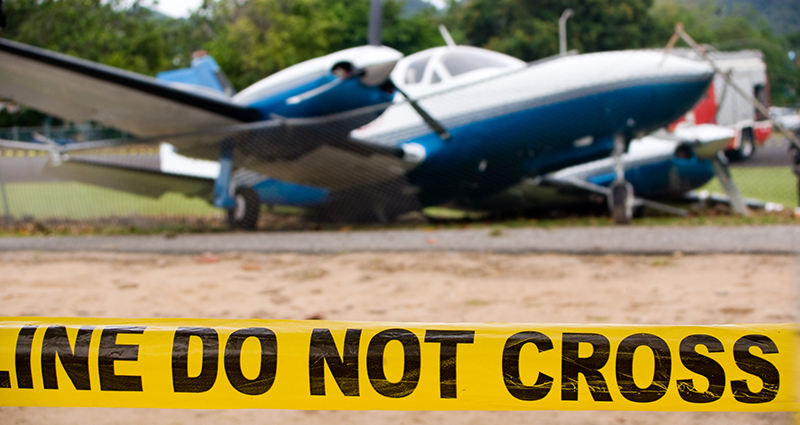Fatal Accidents and Personal Effects: Why Expert Handling Is Essential

The devastating consequences of fatal aviation accidents cannot be overstated. An organization relies on its Emergency Response Plan (ERP) to navigate such a tragedy.
While an ERP should address all facets of a response, it is only one component of an effective response program. An ERP is a framework that outlines how you intend to respond. To execute a successful response, you must also identify the tools and resources needed to make good on those intentions. As part of its emergency preparedness activities, it is essential for an organization to determine which aspects of those tools and resources are available internally and which should be outsourced.
The processing of personal effects is a critical responsibility that an organization should never take lightly. It demands the compassion of highly trained professionals who understand the profound significance of every item. Only through careful handling can the full value and importance of these belongings be preserved.
Defining Personal Effects
In the aviation industry, accidents can cause significant harm to an aircraft and spark destructive post-crash fires. The toll these can take on the human body is catastrophic, leaving families and friends struggling to come to terms with their loss. When families are unable to give their loved ones a traditional funeral, personal effects take on a profound significance, offering a glimmer of solace and comfort in the wake of unspeakable tragedy.
Personal effects (PE) are privately owned items, such as clothing and jewelry, typically worn or carried by an individual. However, to loved ones, each salvageable item embodies the essence of the person they have lost—their aspirations, hopes and memories. These belongings are among the last possessions that were held by their loved ones, providing a tangible connection to the person’s final moments as family and friends navigate the grief of losing someone close to them.
Personal Effects Processing
After an accident, the collection of personal effects requires the operator to coordinate with the local authorities, medical examiner/coroner and NTSB. The magnitude and complexity of the accident scene greatly impact the amount of time required to recover, process and return those personal effects.
Recovery and collection efforts demand detail-oriented team members who thoroughly search the area for items that may potentially be personal effects. These team members possess expertise that allows them to differentiate between accident debris and PE. It’s also important that they be appropriately trained and equipped to navigate accident sites and their many hazards.
Following the collection of these items, careful thought must be given to the appropriate methods for safely transporting them to a processing facility.
Only trained professionals should be responsible for handling and processing personal effects. In some instances, this may entail removing jet fuel, firefighting foam, or biohazardous materials from the items collected.
Personal Effects Specialists have expertise in different cleaning techniques, selecting the most appropriate cleaning agents based on the contaminants present and understanding how different materials react to specific agents. This knowledge of appropriate cleaning techniques is a crucial component of the processing procedure to prevent further damage to the effects and ensure they are safe to handle before they can be returned to families.
Upon completion of the processing phase, the items are prepared for return to the family. It is crucial to establish a protocol that enables family members to request the return of personal effects.
As items are claimed, they are compassionately packaged and delivered into the hands of the ones that hold them dear.
The Value Of Personal Effects
At Fireside, our Personal Effects Specialists ensure that every item is not only safe to return to families but also restored as closely as possible to its pre-accident condition. We emphasize not removing positive memories from the personal effects but alleviating indicators of the accident that may be traumatic to family and loved ones.
The emotional weight of personal effects—a photograph, a piece of jewelry, a logbook—is immeasurable. They are not just objects but fragments of lives lost too soon. They serve as tangible reminders, offering a sense of connection and comfort in times of grief.
Careful handling of PE is a small yet significant gesture. By acknowledging the significance of these items, we pay tribute to the loved ones lost and offer solace to those who continue to mourn their absence.
 Fireside Partners Inc
Fireside Partners IncFireside Partners, Inc., is a fully integrated emergency services provider designed to provide all services and resources required to respond effectively and compassionately in a crisis situation. Dedicated to building world-class emergency response programs (ERP), Fireside instills confidence, resiliency and readiness for high-net worth and high-visibility individuals and businesses. Fireside provides a broad array of services focused on prevention and on-site support to help customers protect their most important assets: their people and their good name.
http://www.firesideteam.com/
© 2025 Fireside Partners Inc. All Rights Reserved.
Next ArticleRelated Posts

Code Red: Planning for the Cyberattack Aftermath
This is an era of rapid change and technological advancement, and although it is challenging, responsible organizations seek to manage and mitigate cyber risks. Insecure systems and uncertain people, added to inadequate contingency plans, create a perfect business continuity storm in the aftermath of a cyberattack.

Aviation Emergency Response and the Media
With recent advancements in technology, the media has become more accessible to everyone, and social media platforms have greatly increased the speed with which information can be shared. As a communication method, the media can be an excellent tool to reach a large audience in a timely manner. However, this ease of access and the nature of modern techniques to drive viewership leads to important considerations in emergency situations.
